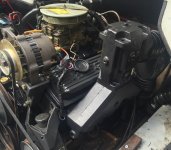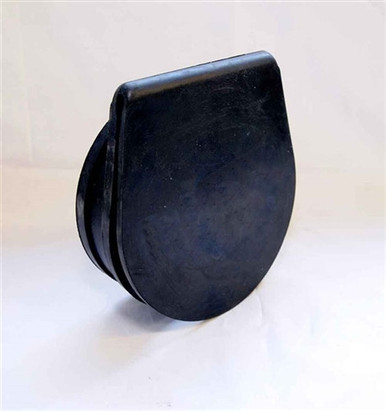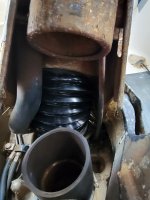Hey Lou, thanks for your continued input and following the thread,When it hydrolocks is it random or is it only when decelerating?
In addition to checking for other signs of water intrusion (cooling system air pressure test) there are are a few other things:
One thing I’m wondering about the cam grind used on that engine, is it definitely a marine grind or a high performance grind? Because if by chance you were sold an automotive version the cam grind could be causing reversion which can cause a hydro lock.
Did the survey find signs of trapped moisture to account for what was felt to be excessive weight?
Other things I’m wondering about are that swim platform adding too much weight and the lack of any kind of flappers. I have seen one Volvo SX equipped boat that had a similar problem, this was a small boat with a big engine (Four Winns 180 with a 5.7 V8)
He wound up trying this with success: removed the VP exhaust bellows and fitted an inboard style flapper to that flange. You’d have to measure the exhaust flange diameter to get the right size.
PS: is that swim platform OE or was it added on as an aftermarket accessory?
The hydro lock is a few minutes after slowing down never when at full throttle or on plane. It happens intermittent once I slow down and cruise for a bit. The only difference from two weeks ago when it didn't happen versus yesterday was that i was cruising between 3-4k for a bit longer before slowing down and cruising at 1k rpms. But I not sure why this issue didn't arise two weeks ago when I was out vs yesterday that's what doesn't make sense either.
The cams should be working okay the whole block came from that Eagle Marine Sales company and they said I should be fully compatible. Even though my original Volvo Penta did come with differ rockers and cam setup. However if there was an issue there I believe that the reversion would be happening more often and more consistent.
Swim platform was OEM from Chaparral and came with the boat when it was constructed in 2004 from what I can gather.
Last edited:
























